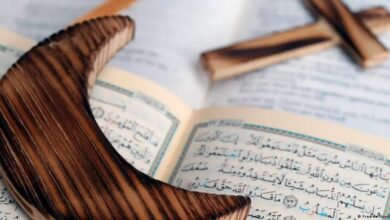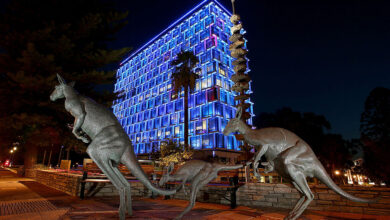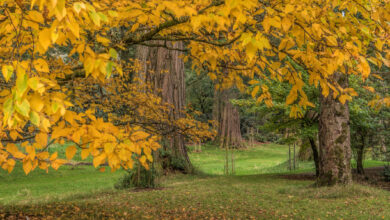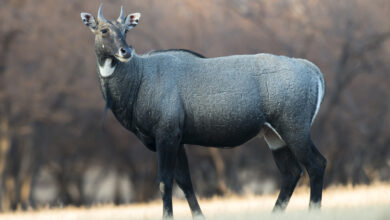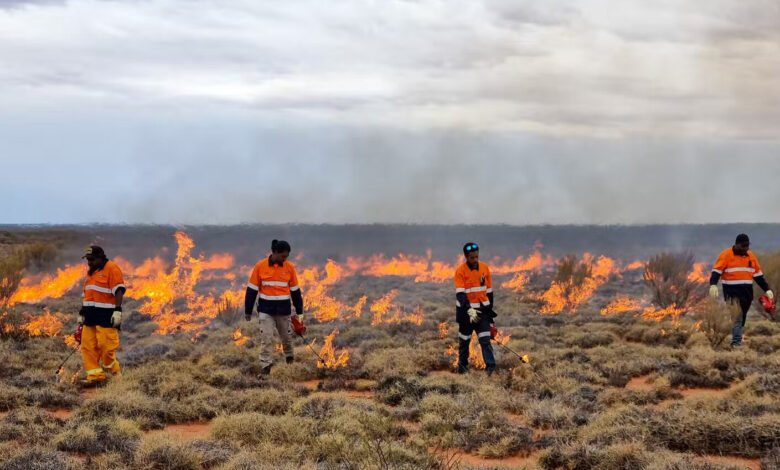
Yilka Rangers burning using drip torches. Photo Credit: Rohan Carboon/Indigenous Desert Alliance, CC BY-ND
Environment Australia(Literally) Fighting Fire with Fire to Protect Nature
Indigenous ranger groups across Australia are joining forces to burn an invasive grass that can become one of the most dangerous sources of fuel when summer heat comes, thus reducing the chances of out-of-control wildfires.
“The first aim is to do a bit of ground burning and then aerial burning; that way, we know everything is protected. Using the helicopter and plane, we can access a Country that’s hard to get to in a vehicle, explains Braeden Taylor, Karajarri Ranger Coordinator. “Working together, we protect each other, looking after neighbors.”
Buffel grass – or Cenchrus ciliaris – is among the highest environmental threats in Indigenous communities. There are 82 Indigenous Protected Areas across Australia – covering more than 87 million hectares of land – and in 12 of them, dozens of Indigenous ranger groups have burned 23,000 km2 of the grass in the Great Sandy, Tanami, Gibson, and Great Victoria deserts as part of the ranger fire management program to protect against summer bushfires, the most destructive of them all. Through aerial devices, ranger groups have spent 448 hours in the air, covering 58,457 kilometers and dropping 299,059 incendiaries (or fire-starting devices). Combined with fine-scale ground burning through drip torches, it is possible to ensure the protection of cultural sites and threatened species like the bilby, night parrot, and great desert skink.
